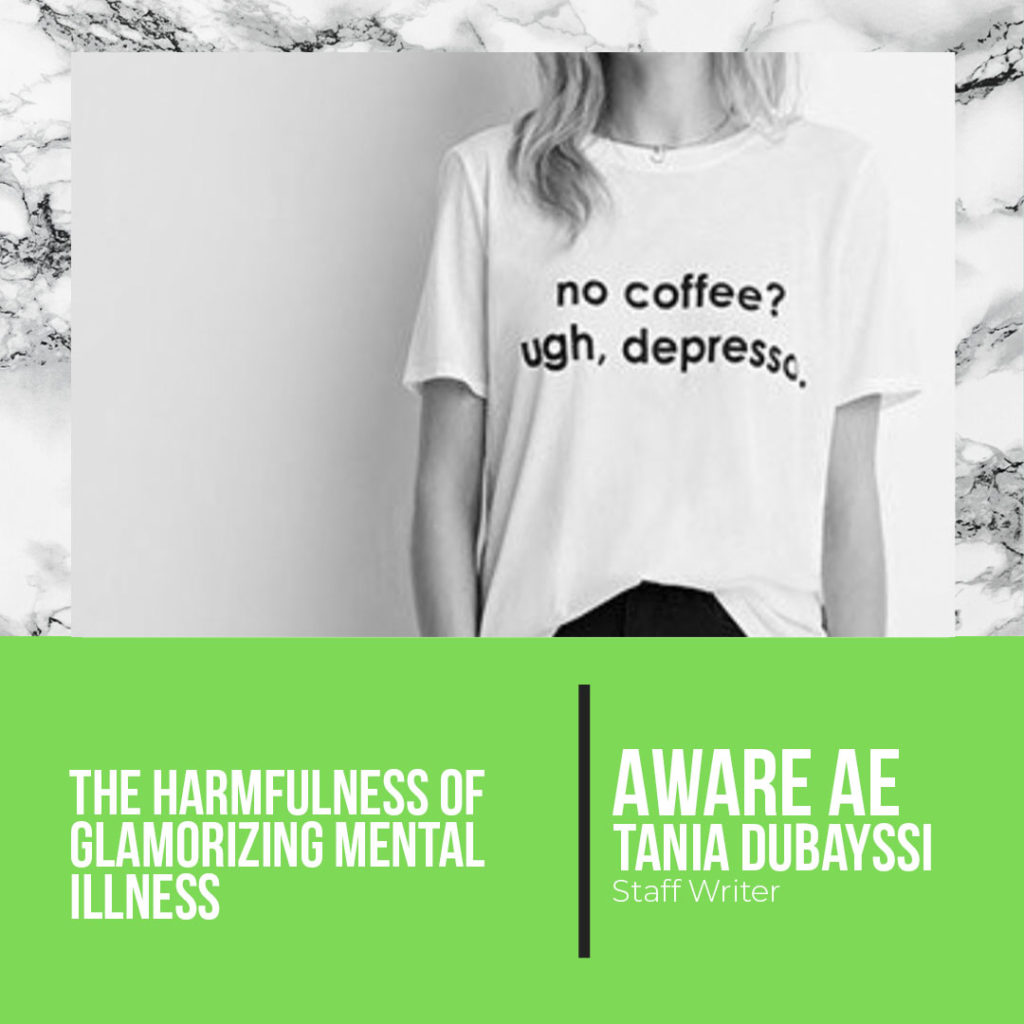Mental health awareness has been storming all over social media and began flooding platforms like Instagram through infographics and aesthetically pleasing motivational posts. With people turning to social media for comfort, the mental health communities have been growing rapidly online to ensure that every individual has a safe space.
With mental health awareness rising, it has been morphed into a “trend” to some, especially to the younger generation who are influenced by what they see online. Brands have been endorsing mental health as a trend by printing phrases like “anxiety queen” or “depressed for life” written in a funky way. However, this is not the right way to spread awareness on illnesses that are a challenge in the lives of others.
The glamorization of mental health should not be influenced on social media, especially to those who do not understand it. In this day and age, individuals may feel as though it is a “personally trait” to post, talk about, and flaunt it, all that while being misinformed. The lack of information being formed surrounding certain mental illnesses is the reason some may not take it as a serious matter or interpret it in a glorified way. The misconceptions surrounding mental health is the reason younger individuals do not look at it as an “illness” and more of like a phase they go through.
While normalizing mental health nowadays seems almost like an accomplishment, such comments and posts about it almost end up sounding superficial. Instead of normalizing mental health, it is being popularized through unrealistic activism. On the other hand, the same individuals who post and shed light on mental health get bothered and find it an inconvenience when a friend or family member experience a form of mental illness. The sad truth is that mental health has been glamorized with misleading information.
Why Is Mental Health Being Glamorized?
Mental health has been downplayed into an innocent persona, something desired to look “cool”. This misinterpretation is not only shown on social media, but also in many TV shows and movies. Someone that claims to have “depression” is seen as “cute” or “quirky”. Social media often provides wrong misrepresentations of what mental illness can look like. Because of this, many young people on big platforms such as TikTok or Instagram see it as a repetitive trend or a personally trait and sugarcoated it as seeming that mental illness is something every one goes through and is not something harmful. Social media has given those with big platforms to play out such mental illnesses like depression to be like a comfortable sadness, lying in bed for hours upon days, watching tons of movies, eating ice cream, and staying in the same pajamas for days. On the other hand, anxiety is depicted as a quick fixable change by doing 5-minute breathing exercises or going on a drive to fix how you feel. Moreover, OCD has become a widespread common misdiagnosed illness, being spread around online used in the wrong terms. OCD has become known to be describing someone who is a perfectionist or someone who needs their bedroom clean all the time. Even more so, people are claiming mania to describe someone who just outbursts and does things even if it is 4 AM, claiming themselves to be outspokenly “different”, even with the countless amount of coffee being consumed.
Other illnesses, such as schizophrenia, bipolar disorder, and DID are left out as they are seen as unfashionable and less likable illnesses, even though bipolar disorder has been popularized and seen to describe someone who just has outbursts of anger and that when they eventually get what they want, they are “happy” again. These illnesses are still going through a negative stigma because people have yet to create a “gentler” version of such illnesses. These other mental disorders are not seen as “artsy” or “creative”.
The romanticization of mental disorders has been around for centuries. Authors from the 20th century wrote novels and stories emphasizing their characters’ mental well-being to be “charmingly tragic” and “beautifully suffering” from depression. Sad poetry got popular during the 1990s and the 2000s depicting mental health to be “different” and having an overall sad aesthetic.
Changing the Narrative of Mental Illnesses
During times like this, with an increasing number of people experiencing different types of mental disorders, it is crucial to take time and dig deeper into how mental health is presented. It is, hence, important to educate those around us – family, friends, or even individuals online. We cannot push those speaking up about their mental health and what they are experiencing away. We need to listen and take in their experiences with respect to them, not push them away because some might not see a problem with it. Mental illness is not a personality trait nor is it cute or fun to deal with. Many are suffering and are challenged everyday to get up out of bed and live their lives somewhat normally. We need to support each other, and change the way others talk about mental disorders, even if it does not apply to you.
We need to work together as a whole, learn, and teach each other how to support those struggling with their mental well-being. It is more than an Instagram post about “self-care” by getting facemasks and watching TV shows all day. It is more than posting positive motivational quotes saying, “you can do it.” It is learning to practice how to lift each other up and continue to learn more about mental health and not continue spreading false misinterpreted activism on social media. Our first step is to acknowledge the reality of mental illness and stop glamorizing it to be something to “have”.
